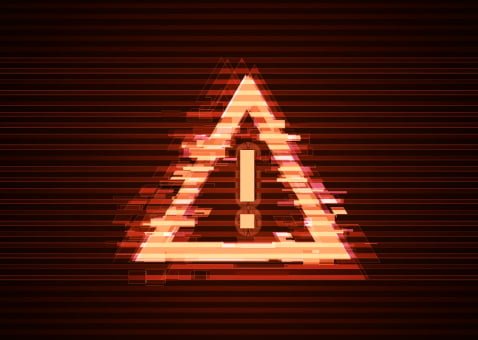SOC augmentation is all about scaling capabilities with proactive cyber security services from a third-party provider. In recent years, security providers have taken advantage of new technologies to expand SOC-as-a-service (SOCaaS) offerings.
Now, SOC augmentation can include a wide variety of services, including standard cyber security threat detection (Tier 1), advanced detection and response (Tier 2), customized threat intelligence, vulnerability management, and digital forensics.
The challenge for cyber security leaders is determining whether SOC augmentation services are worth the investment. The following five lessons provide clarity about this proactive cyber security strategy and how they solve the in-house security skills shortage.
1. Improve Vulnerability Assessments
When you’re so close to a situation, it can be difficult to take a step back and make objective assessments. This is as true in cyber security as anything else in life. With a skills shortage plaguing cyber security teams, it can be difficult to gather different perspectives of your infrastructure’s strengths and weaknesses.
SOCaaS provides expert, objective vulnerabilities assessments that can identify the weak points of your network, infrastructure, and applications. This gives you a foundation for more efficient cyber security spending and strategic planning.
2. Transition from A Reactive to A Proactive Cyber Security strategy
Traditional cyber security is reactive—you’ve taken action in response to threats that are identified by perimeter defenses. But when you’re faced with advanced, modern threats, you can’t expect to mitigate damages effectively enough through reactive cyber security measures.
With the help of SOC augmentation, you can take advantage of proactive monitoring that detects security incidents at the earliest possible moment.
Today, a proactive cyber security posture is essential, and SOCaaS can help you get there. With the help of SOC augmentation, you can take advantage of proactive monitoring that detects security incidents at the earliest possible moment. They do this by creating a zero trust architecture that gathers massive amounts of sensor data, making it easier to prioritize cyber security threats before they impact network integrity. While internal security leaders can take a zero trust approach on their own, there is far too much activity to monitor and spot every anomaly.
3. Prioritize Your Cyber Security Strategy Around Risk
One concern for cyber security leaders considering SOC augmentation is figuring out how to implement these services without exhausting budgets or hurting scalability. It’s a valid concern given that massive attack volumes can make continuous threat monitoring, detection, and response expensive.
The key to implementing SOC-as-a-service without hurting cost efficiency or scalability is to prioritize activity around cyber security risk assessment. Instead of treating every attack the same, you want to focus the attention of a security provider on vulnerabilities and threats that are more likely to lead to major breaches.
The key to implementing SOC as a service without hurting cost efficiency or scalability is to prioritize activity around risk.
The reality is that very few organizations have the means to prioritize around risk on their own—especially when resources are limited knowledge gaps exist. Trusting the expertise of a SOCaaS provider optimizes cost efficiency across your entire cyber security strategy and fills in security knowledge gaps.
4. Meet Expectations for Cyber Insurance Providers
The notion of cyber insurance is becoming increasingly attractive for companies of all sizes. The market for these policies continues to grow as the costs of even a single cyber security incident balloon out of control. But this is still a fairly new concept, forcing insurers to take a cautious approach to cyber security risk assessment and coverage.
One thing security leaders often overlook when preparing to apply for cyber insurance is the importance of incident response times. So many resources are spent on computer security incident management only to result in high-priced premiums due to a poor recovery planning. By working with an SOC augmentation provider, you can provide insurers ease of mind that you’re prepared to respond to potential attacks swiftly and effectively. This will help ensure your business is covered and keep premium prices as low as possible.
5. Analyze Threat Patterns for Proactive Cyber Security
Threat analysis is a major component of any proactive cyber security strategy. Beyond being able to monitor large volumes of data and cut through the noise to prioritize activity, you need to be able to spot trends in threat vectors and respond accordingly.
Studies have shown that the vast majority of vulnerability exploits are zero day threats. Traditional signature-based security monitoring won’t be able to defend your most valuable assets. Instead, you need to be able to create network baselines, analyze attack patterns, and proactively identify threats even if they’ve never been seen before. This is a significant challenge for internal security leaders who have many other responsibilities. But SOCaaS providers alleviate the pressure by continuously analyzing threat patterns.
Providers that implement smart automation can create additional value by learning from endless sources of data and responding to alerts and incidents with additional context and insights.
The Myth of Full Automation
In the face of a cyber security skills shortage and the explosion in the volume alert data, discussions about a full SOC automation always emerge. And it makes sense—the more you can automate, the easier it is to keep pace with ever-growing volumes of alerts. But a there is an important balance to be struck. Virtual analysts can automate and accelerate cyber operations by providing contextualized and actionable information. But human intelligence (HUMINT) will always be necessary to focus on the most urgent incidents and proactively identify potential threats.
No matter what you can automate, human intelligence will always be necessary to maximize the effectiveness and efficiency of cyber security processes.
That’s why a semi-autonomous SOC is highly valuable. The combination of virtual agents and human experts ensures the accuracy of data gathering and formatting are always in place to conduct reinforced learning across AI-powered cyber security systems. The result is a collaboration network that fuels continuous improvements to SOC augmentation services.
At CyberProof, we help clients create customized semi-autonomous SOCs. Contact us for a free consultation to learn more about security augmentation with our semi-autonomous SOC solutions.


